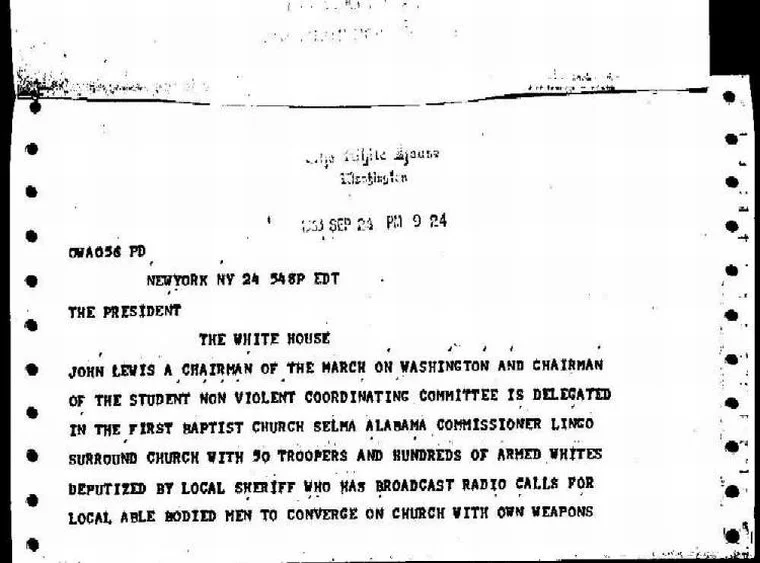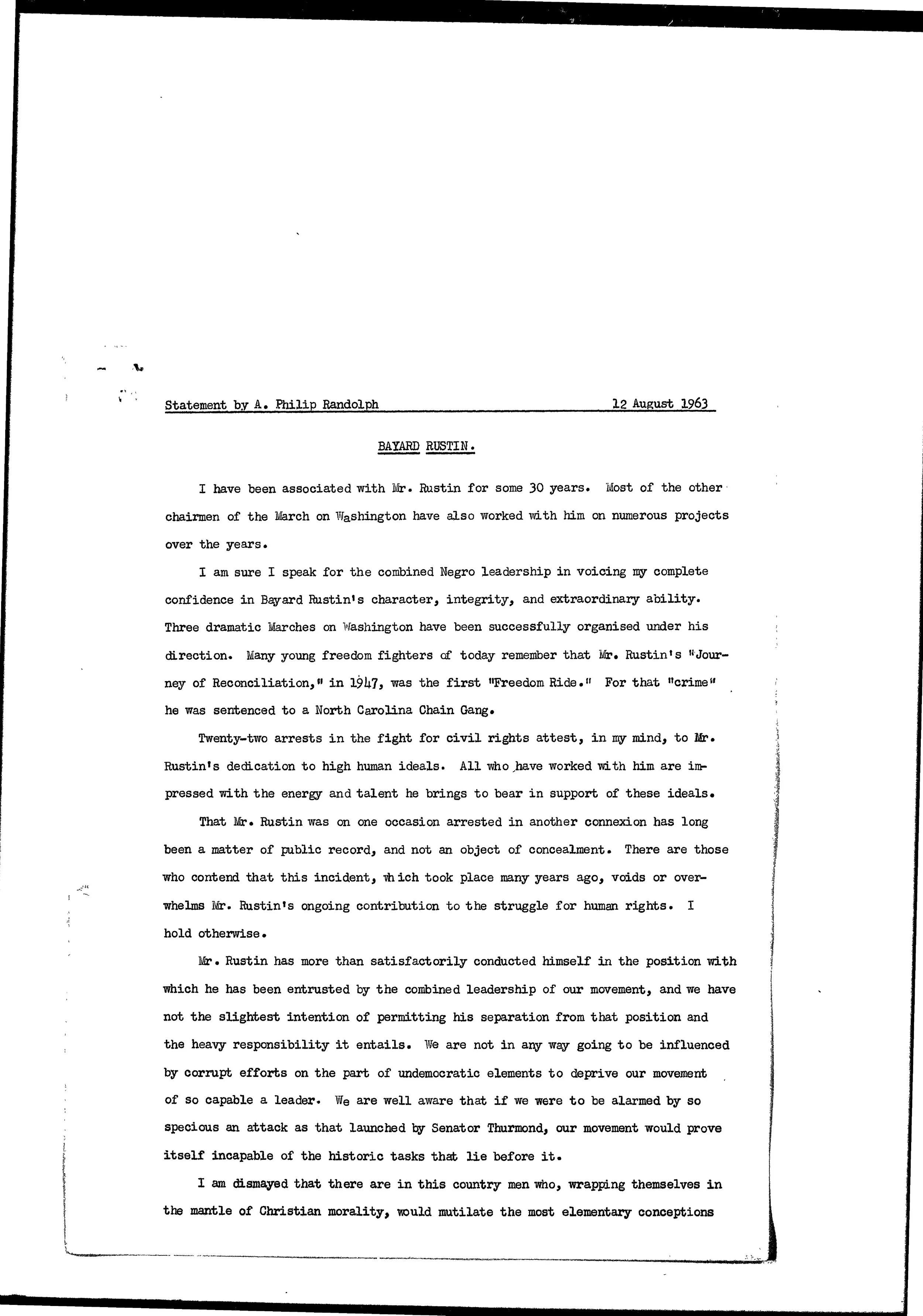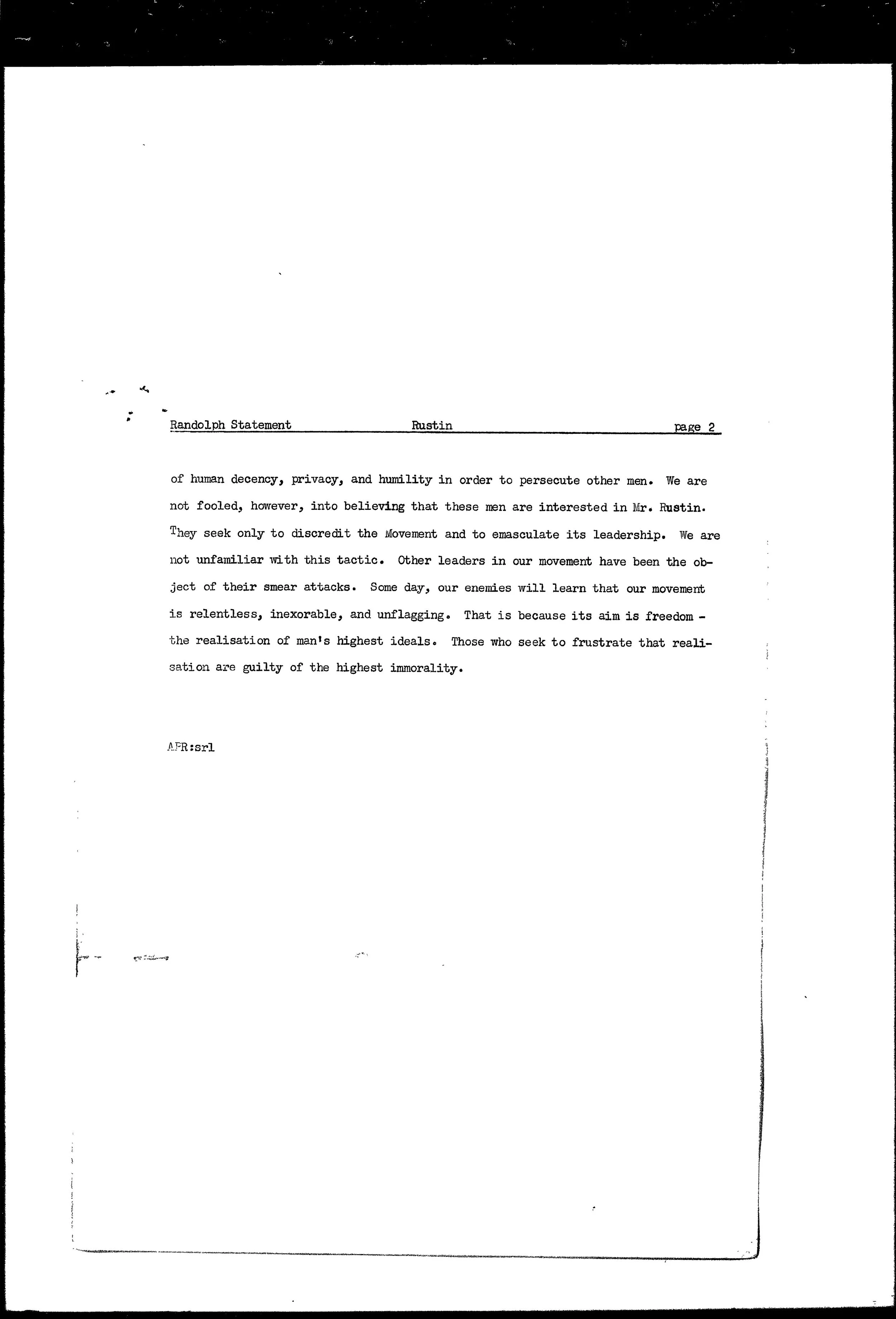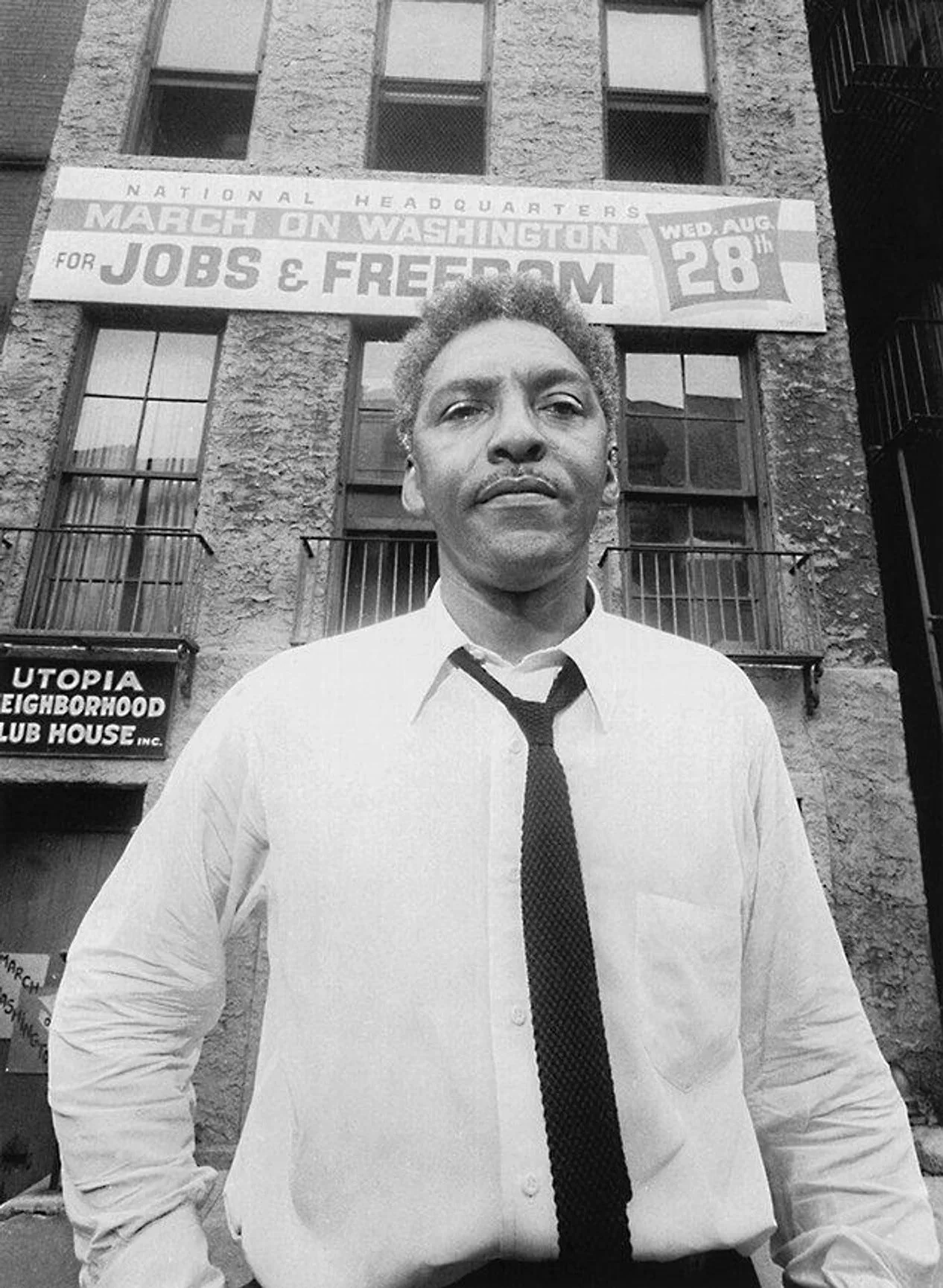This speech, delivered by Bayard Rustin at the 1963 Fourth Annual Student Nonviolent Coordinating Committee (SNCC) Conference, elaborates on the strategic and philosophical foundations of nonviolent direct action within the civil rights movement. Rustin addresses the challenges of maintaining discipline and commitment among young activists in the face of systemic oppression and encourages coalition-building across racial and ideological lines to achieve justice. The speech also reflects on the evolving tactics of the movement and the critical importance of upholding nonviolence as both a moral principle and practical strategy.
Follow-Up 1963 Telegram Demanding Federal Action in Selma Voting Rights Crisis
A follow-up telegram the same day demanded urgent federal action as armed white civilians joined police terrorizing African American demonstrators trapped in a church.
During the Church siege, local authorities and armed white civilians worked together to trap African American activists, exposing the deep collaboration between law enforcement and vigilantes in maintaining racial control. Despite clear violations of constitutional rights, the federal government was reluctant to intervene, reflecting persistent debates over states' rights and federal enforcement. The confrontation foreshadowed later federal action in Selma and underscored why why comprehensive voting rights legislation became urgently necessary in the years that followed.
John F. Kennedy Presidential Library and Museum. Telegram, September 24, 1963. https://www.jfklibrary.org/asset-viewer/september-24-1963.
Bayard Rustin’s 1963 Urgent Telegram to President Kennedy on Selma Church Siege
LIFE Magazine Cover: Bayard Rustin and A. Philip Randolph at the Lincoln Memorial, March on Washington 1963
Rustin and Author James Baldwin Calling on President Kennedy to Intervene in Alabama
Bayard Rustin and James Baldwin stand side by side, holding an armband inscribed “Birmingham Children” during a protest urging President John F. Kennedy to deploy federal troops to Alabama in response to Governor George Wallace’s militant resistance to desegregation. The armbands honored the memory of African-American children murdered in Birmingham, reinforcing the urgent demand for federal protection of civil rights.
Bayard Rustin Addresses Marchers from the Lincoln Memorial during the March on Washington for Jobs and Freedom, August 28, 1963
Bayard Rustin stands at the microphone on the steps of the Lincoln Memorial, rallying the crowd and issuing crucial instructions that would ensure the March on Washington’s peaceful and powerful impact. As the architect behind the day’s logistics and strategy, Rustin’s clear presence at the podium marks the culmination of months of tireless organizing—uniting diverse groups into a single, disciplined force for justice. The moment crackles with anticipation, as Rustin energizes marchers and steers the day’s events with a steady, visionary hand.
March on Washington: Mobilization Bulletin #2
1963 Leaflet Mobilizing Activists for the March on Washington
Bayard Rustin Prepares for the March on Washington, August 27, 1963
Rustin is captured in an intense moment of concentration, his attention fixed on the immense responsibilities before him as the primary architect of the March on Washington. The weight of the moment is visible in his expression, as he mentally runs through final plans and prepares to marshal thousands of people from across the country into a unified, peaceful demonstration. On this day, Rustin troubleshoots last-minute obstacles, encourages weary volunteers, and sharpens the vision that would, within twenty-four hours, change the course of American history.
A. Philip Randolph’s Statement in Defense of Bayard Rustin
A. Philip Randolph issues a public statement affirming his “complete confidence” in Bayard Rustin’s “character, integrity, and extraordinary ability,” highlighting Rustin’s role organizing three Marches on Washington and the 1947 Journey of Reconciliation, and condemning attacks—such as those by Senator Strom Thurmond—that sought to remove Rustin from leadership.
In the tense summer of 1963, pro-segregation opponents, led by Senator Thurmond, launched a smear campaign against Rustin—citing a past arrest—to undermine his pivotal role in planning the upcoming March on Washington. Randolph’s blunt refusal to cower to “undemocratic elements” underscored the Movement’s determination to defend its organizers against moralistic political attacks and maintain unity ahead of the historic demonstration
Randolph, A. Philip. “Statement by A. Philip Randolph on Bayard Rustin.” August 12, 1963. Bayard Rustin.
Bayard Rustin and Cleveland Robinson at the March on Washington National Headquarters, 1963
With the March on Washington Less Than a Month Away, Rustin Poses in Front of the National Headquarters Office (August 1, 1963)
Bayard Rustin stands outside the National Headquarters for the March on Washington for Jobs and Freedom, located on West 130th Street in New York City, just weeks before the historic demonstration. The iconic headquarters sign looms overhead, signaling the urgency and scale of preparations underway for one of the most pivotal events in American civil rights history.
This moment documents the relentless groundwork of movement organizing that preceded the landmark demonstration on August 28, 1963. At this time, Rustin and fellow strategists worked from New York’s Harlem—far from the spotlight—to coordinate transportation, logistics, and coalition-building for a multi-racial march with unprecedented scope. Behind the scenes, Rustin navigated deep tensions within the civil rights movement, including doubts about his visibility due to homophobia and red-baiting, as well as skepticism from activists who questioned whether mainstream, nonviolent organizing could confront entrenched Southern resistance. The image stands as testament to the labor, negotiation, and resilience required to transform a local mobilization hub into the strategic nerve center of one of the largest mass protests in U.S. history.
Advocate.com Editors. 2023. “Bayard Rustin’s Life and Civil Rights Legacy in Photos.” Advocate.Com, November 17, 2023. https://www.advocate.com/slideshow/2019/1/21/bayard-rustins-life-and-civil-rights-legacy-photos#rebelltitem3.






